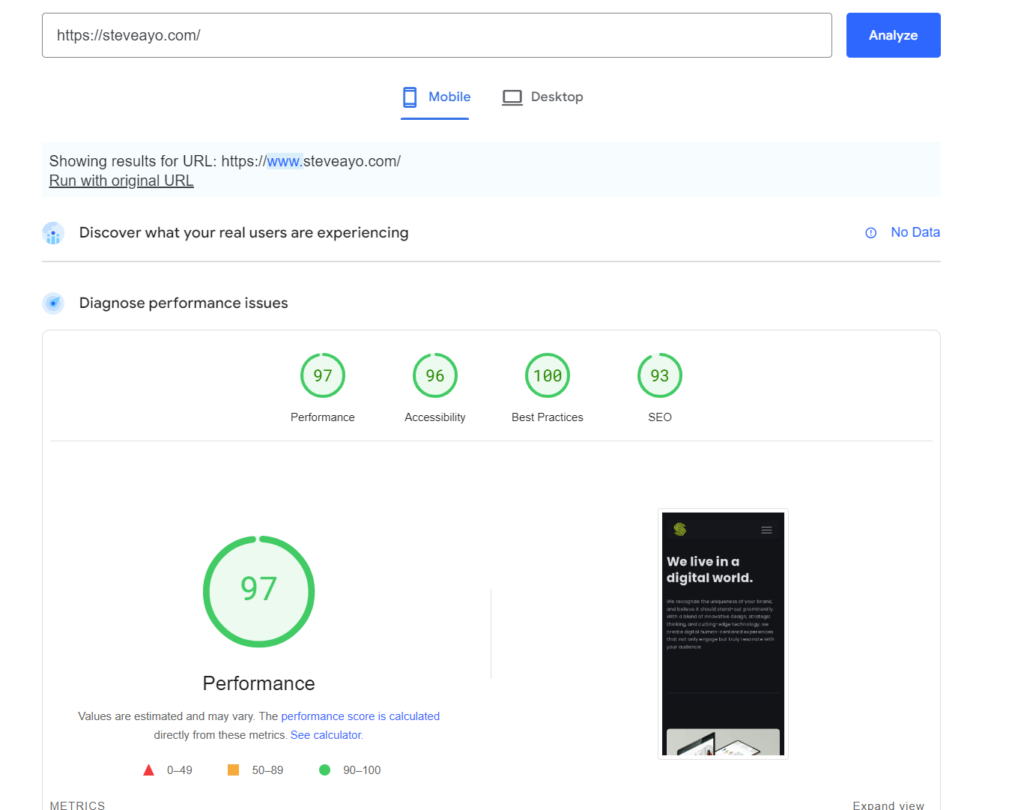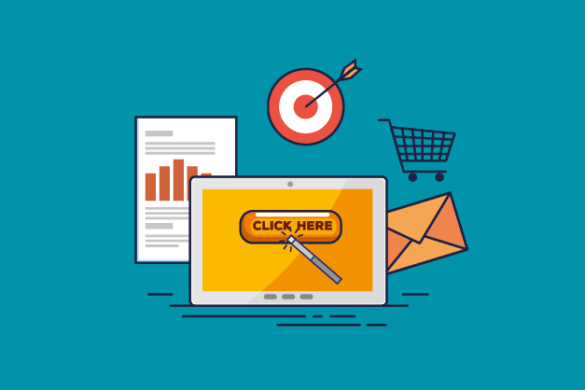Table of Contents
Are you getting results from your landing pages? Or do visitors leave without reacting to your call to action (CTA) or filling out your form? This blog post is specifically written for you if the bounce rate on your landing page is higher than you would want.
We’ll look at six common causes of a high landing page bounce rate and offer workable fixes. Would you like more insights about digital marketing delivered right to your inbox? To receive more advice and tricks, sign up for our email newsletters!
What is landing page bounce rate?
A bounce occurs when someone visits your website and leaves without taking any further action. Your website’s bounce rate tells you what percentage of sessions consisted only of the first contact. A hypothetical example of a second interaction is when a user clicks on a link to visit a different page on your website.
This contact could also include any other activity related to conversions, including filling out a form or clicking a call-to-action button; landing pages often include these kinds of interactions. Therefore, the percentage of visits to a landing page, or a set of landing pages, that did not result in a follow-up interaction—that is, a user conversion—is known as the landing page bounce rate.
What is a good landing page bounce rate?
A high bounce rate doesn’t always indicate a bad thing for certain types of pages. Consider a blog post with a high bounce rate; this could indicate that the material fully answers the reader’s question.
The goal of the page influences how bounce rate is interpreted. Generally speaking, landing pages should have a low bounce rate. It shows that a considerable percentage of users go on to convert when they reach the landing page, fulfilling the stated purpose.
What consequently renders a landing page’s bounce rate favorable? Benchmarking your data against landing page bounce rate guidelines can be useful. Landing page bounce rates typically range from 70% to 90%, according to QuickSprout.
It is considerably more helpful to look into your own bounce rate patterns over time rather than depending only on landing page standards. Aim to consistently improve upon your previous landing page bounce rates.
6 top causes and how to improve high landing page bounce rate
What might be the reason if your bounce rate isn’t as substantial as you had hoped? And how can you resolve the matter?
Six common problems that lead to a high landing page bounce rate are listed below, along with fixes for each.
1. Not meeting the user’s expectations
When users land on a landing page and find the content falls short of their expectations, this is often the cause of a high bounce rate. This frequently occurs because there is a difference between the content of the landing page and the ad or link that directed the user there. Consider the following scenario: you see an ad showcasing multiple of the newest smartphone models, but when you click on it, the landing page asks you to subscribe to a newsletter about mobile accessories.
In such instances, users may exit the page because the offer doesn’t align with what they were expecting. To address this issue, it’s essential to review both the advertisement and the landing page to ensure they are closely aligned in terms of topic and offer.
Furthermore, ensuring that the headline, color scheme, design components, and imagery on the landing page and the advertisement are consistent can help users feel as though they have reached their intended destination. Think of an ad for a new recipe app, for instance, that features eye-catching food photos and appealing text. To improve user engagement and create a smooth transition, the matching landing page should reflect these aspects.
2. Demanding users to put in enormous effort
When your landing page places excessive demands on the user, that could also be a problem. Users may leave a landing page with a form that asks for personal information too soon or with too many input fields. When a form asks for a lot of information, people might not want to take the time to fill it out.
In addition, asking for sensitive information may cause the user to leave your website if you haven’t established enough trust with them. It’s critical to confirm that your offer supports the intended user action or the completion of your form. Generally speaking, try to keep your forms brief and easy to use, and only ask for the information that is absolutely necessary.
3. Bad user experience or design of the landing pages
Your landing page’s bounce rate can be greatly impacted by the design and user experience. If users find it difficult to navigate or visually appealing, they may leave your landing page without taking any action.
Studies show that users are unwilling to provide personal information to websites they don’t trust because 75% of them base their judgment of a website’s credibility on its design. Designing and placing your call-to-action (CTA) button is another possible source of worry. Customers may miss your call to action (CTA) button if it is not prominently displayed.
Use color and design to set your CTA button apart from the rest of the page for better visibility, and make sure it is in a prominent place. Additionally, make sure that your CTA’s layout or design doesn’t immediately resemble an ad.
4. A cluttered or confusing copy
Another important component of your landing page that has a big impact on its bounce rate is the text content. Users may become frustrated or confused and leave your page if it is unclear or has too much text on it. On landing pages, in general, a lot of text is redundant, especially at the top.
Start with the most important details at the top of the page and add any more information as you go. Throughout your page, use headings, white space, and visual elements to organize your text so that it can be easily scanned. Additionally, make sure your message is understood clearly, use proper grammar and spelling, and stay away from typos.
5. Slow-loading page
Page speed is another common factor that affects landing page bounce rates. Users will probably navigate away from your landing page if it takes too long to load. More than 80% of users expect pages to load in three seconds or less, and conversion rates can rise significantly even if you can cut the time it takes for your page to load by just one second.
Google’s PageSpeed Insights tool can help you determine how long it takes for your page to load. It analyzes the speed of your page and offers recommendations for improvements.

There are various strategies to enhance your page speed, such as:
- Compressing your files and minifying your code
- Reducing the number of redirects
- Using browser caching
- Remove unused code
If you’re unsure about implementing these changes, you might want to think about hiring us for page speed optimization.
6. Untargeted traffic
There is little chance that users who are not in your target audience will convert when they land on your landing page. You’ll see a high landing page bounce rate if the ads don’t target the right users or keywords. Review your PPC plan and conduct more in-depth audience research to solve this issue.
Next, adjust your targeting parameters and keep an eye on your bounce rate to see where you can make improvements.
Take your digital marketing to the next level with Us
Reducing your landing page’s bounce rate is crucial to improving its effectiveness. If the bounce rate on your landing page is not up to satisfactory levels, taking care of these six problems will help. Join our email newsletters for more insights on digital marketing.
Get a free quote to learn more about our digital marketing services if you need help improving your landing pages, fixing problems with your PPC campaigns, or fine-tuning other areas of your online marketing initiatives.







Add your first comment to this post